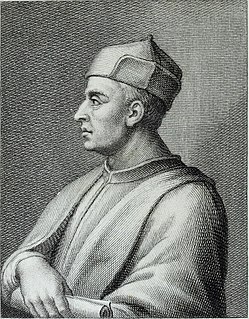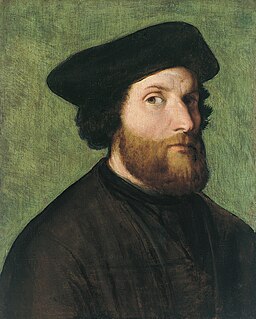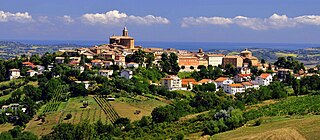
Luca Signorelli was an Italian Renaissance painter who was noted in particular for his ability as a draftsman and his use of foreshortening. His massive frescoes of the Last Judgment (1499–1503) in Orvieto Cathedral are considered his masterpiece.

Lorenzo Lotto was an Italian painter, draughtsman, and illustrator, traditionally placed in the Venetian school, though much of his career was spent in other north Italian cities. He painted mainly altarpieces, religious subjects and portraits. He was active during the High Renaissance and the first half of the Mannerist period, but his work maintained a generally similar High Renaissance style throughout his career, although his nervous and eccentric posings and distortions represented a transitional stage to the Florentine and Roman Mannerists.

Pordenone, Il Pordenone in Italian, is the byname of Giovanni Antonio de’ Sacchis, an Italian Mannerist painter, loosely of the Venetian school. Vasari, his main biographer, wrongly identifies him as Giovanni Antonio Licinio. He painted in several cities in northern Italy "with speed, vigor, and deliberate coarseness of expression and execution—intended to shock".

Assisi Cathedral, dedicated to San Rufino is a major church in Assisi, Italy. This stately church in Umbrian Romanesque style was the third church built on the same site to contain the remains of bishop Rufinus of Assisi, martyred in the 3rd century. The construction was started in 1140 to the designs by Giovanni da Gubbio, as attested by the wall inscription visible inside the apse. He may be the same Giovanni who designed the rose-window on the façade of Santa Maria Maggiore in 1163.

Castelplanio is a comune (municipality) in the Province of Ancona in the Italian region Marche, located about 35 kilometres (22 mi) southwest of Ancona.

Maiolati Spontini is a comune (municipality) in the Province of Ancona in the Italian region Marche, located about 35 kilometres (22 mi) southwest of Ancona. It is the birthplace of musician Gaspare Spontini, whose name has been conjoined with the commune's ancient name, Maiolati.

Montecarotto is a comune (municipality) in the Province of Ancona in the Italian region Marche, located about 40 kilometres (25 mi) west of Ancona, mostly known internationally for the annual Blackmoon festival, a renowned goa and psytrance happening. As of 31 December 2004, it had a population of 2,163 and an area of 24.1 square kilometres (9.3 sq mi).
Poggio San Marcello is a comune (municipality) in the Province of Ancona in the Italian region Marche, located about 35 kilometres (22 mi) southwest of Ancona.

Rosora is a comune (municipality) in the Province of Ancona in the Italian region Marche, located about 40 kilometres (25 mi) southwest of Ancona.
San Marcello is a comune (municipality) in the Province of Ancona in the Italian region Marche, located about 25 kilometres (16 mi) west of Ancona.

Giulio Cesare Procaccini (1574–1625) was an Italian painter and sculptor of the early Baroque era in Milan.

Marcello Venusti was an Italian Mannerist painter active in Rome in the mid-16th century.

Bartolo di Fredi, also called Bartolo Battiloro, was an Italian painter, born in Siena, classified as a member of the Sienese School.
Leonardo Antonio Olivieri or Oliviero was an Italian painter of the late-Baroque.

Jacopo di Michele, also called Jacopo Gera, Iacopo di Michele, or Gera da Pisa is a 14th-century painter, active mainly in Pisa and elsewhere in Tuscany, in a Gothic style. His activity is documented from 1361 to 1395. He is the brother of Getto di Jacopo
Nicola or Niccolò Porta was an Italian painter of the late-Baroque period.

San Giorgio is a Roman Catholic church located on the Piazza of the same name, just outside Porta Bruciata, in Brescia, region of Lombardy, Italy.
Giovanni Antonio De Pieri, known as il Zoppo Vicentino (1671–1751) was an Italian painter of the Baroque style, born and active in Vicenza.

Simone De Wobreck was a 16th-century Flemish painter, whose known works all come from his long period in Sicily.
The Diocesan Museum of Palermo is a museum of religious art in Palermo on Sicily, housed in a number of rooms in the Palazzo Arcivescovile opposite Palermo Cathedral.














